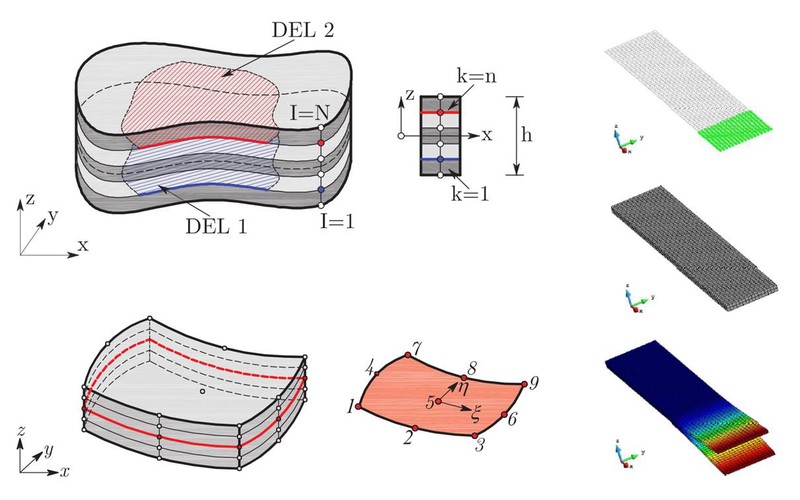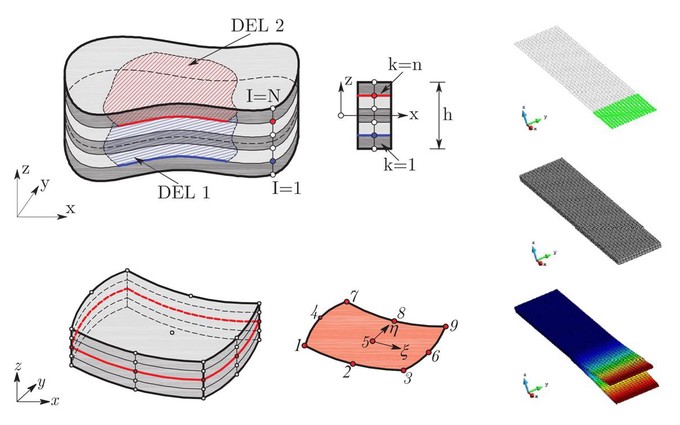Multilayer composite structures attract the increasing attention in the various engineering disciplines. They play an important role in the design and construction of aircrafts, wind turbines, ships, cars and many other applications in mechanical and civil engineering. These structures are made of composite materials that have an excellent fatigue and corrosion resistance properties, as well as high stiffness-to-weight and strength-to-weight ratios. Examples are carbon-fiber, glass-fiber, or fiber-reinforced polymers (FRP).
However, many unique phenomena arising from the heterogeneous constitution of multilayer composite structures need the application of complex and accurate computational models. The kinematics of such structures is characterized by the coupling between bending, extension, and shear, while at the ply level these structures exhibit transverse stress concentrations near material and geometric discontinuities, usually resulting in different forms of damage, i.e. delamination or matrix cracking.

Different types of multilayer structures: honeycomb sandwich plate (left), laminated composite plate (middle) and soft-core sandwich panel (right)
The global behaviour of laminar composites (deflections, critical buckling loads, fundamental vibration frequencies and mode shapes) may be accurately predicted using relatively simple equivalent-single-layer (ESL) theories, especially for very thin laminates. However, if a highly accurate assessment of the stress-deformation state is needed, refined theories are recommended. In addition, the assessment of localized regions for potential damage initiation begins with the accurate determination of the 3D state of stress/strain at the ply level. In contrast to the ESL theories, the layerwise theories allow for the calculation of continuous transverse stresses at layer interfaces, providing a much more correct representation of cross-sectional warping.
As the laminated structures are used for primary or secondary components of different engineering structures (generally loaded with transient loads), it is of the great importance to understand their fundamental dynamic properties, such as natural frequencies and mode shapes.
Main activities of the research group are related to the development of the efficient computational tools based on different laminated plate and shell theories, capable to describe the full 3D stress state of the multilayer structures. Special focus is on the Generalized Laminated Plate Theory of Reddy, which became the basis for the development of enriched layered finite elements, applied in the numerical solution of different structural problems. The geometric nonlinearity is taken into account upon the von Kármán assumptions. Based on the theoretical considerations, our research group develops the original software in Matlab and Python in conjunction with GiD Pre/Post Processor.

